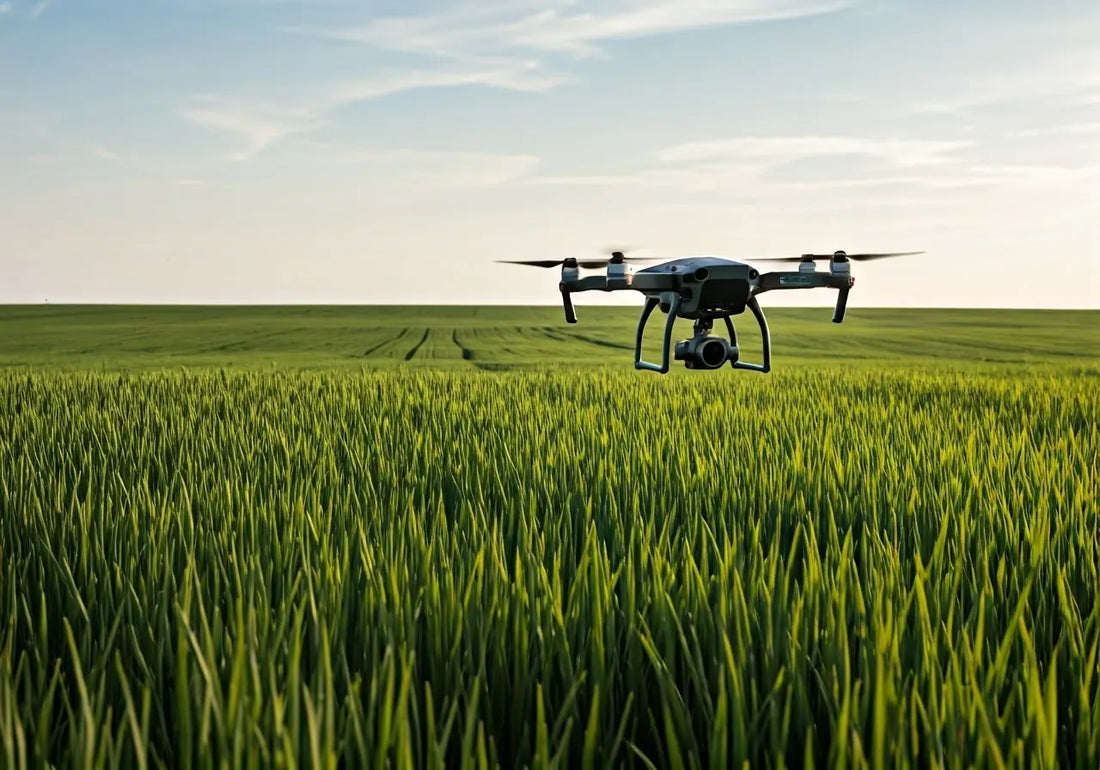
Maximizing Crop Yields with DJI Agras T50: Tips and Tricks
Share
In today’s agricultural landscape, precision and efficiency are key to maximizing crop yields. The DJI Agras T50 is a cutting-edge agricultural drone designed to help farmers achieve these goals. In this blog post, we’ll dive into some tips and tricks to get the most out of the DJI Agras T50 and enhance your farming operations.
Understanding the DJI Agras T50
Before diving into the tips, it’s essential to have a good understanding of what the DJI Agras T50 is and how it works. This agricultural drone is designed to help farmers with tasks such as spraying pesticides, fertilizers, and herbicides while offering precise application and efficient coverage. The DJI Agras T50 stands out with its ability to integrate surveying and flight operations, making it an all-in-one solution for modern farming needs.
One of the standout features of the DJI Agras T50 is its payload capacity. It can carry up to 40 kg for spraying and 50 kg for spreading, making it suitable for both small and large farming operations. Additionally, the drone’s Dual Atomizing Spraying System produces consistent, fine spray droplets and can reach a flow rate of up to 24 L/min with centrifugal sprinklers. This facilitates effective and uniform treatment of crops across vast fields [1].
Proper Setup and Calibration
Setting up the DJI Agras T50 correctly is the first step to ensure it operates effectively. Calibration of its sensors and components is crucial for accurate spraying and operational safety. Begin with a thorough pre-flight inspection, checking the drone for any signs of wear or damage. Ensure the sprayer system, propellers, and battery are intact. Additionally, updating the firmware will allow you to use the latest features and improvements provided by DJI. This helps maintain optimal functionality and safety.
Weather conditions play a significant role in drone operations. Always check the forecast before a flight, aiming for clear skies with minimal wind. High winds and rain can disrupt your drone’s operations and potentially damage it. Calibrating the drone’s sensors and flight systems according to the manufacturer’s guidelines is also critical. Proper calibration ensures the accuracy of the drone’s navigation and spraying functions, leading to precise and efficient coverage.
Once your setup and calibration are complete, familiarize yourself with the drone’s controls and features. Conducting a few test flights in a safe, open area can help you gain confidence in handling the drone. This practice will also allow you to make any necessary adjustments before deploying the drone for actual fieldwork. Proper setup and calibration can significantly enhance the efficiency and effectiveness of your DJI Agras T50, laying the foundation for successful operations.
Creating Effective Flight Plans
Flight planning is a critical aspect of using the DJI Agras T50 efficiently. Detailed and well-thought-out flight plans help in covering the fields uniformly and minimizing overlaps. Use the DJI Flight Planner software to map out your fields, ensuring all areas are covered without unnecessary repetition. This helps in delivering precise applications, whether it’s fertilizers, pesticides, or herbicides.
When mapping out your agricultural land, consider different flight patterns such as back and forth rows or spirals depending on your field’s size and shape. Adjusting the flight height is another crucial aspect. Flying at a lower altitude offers detailed coverage but covers less ground, whereas higher flights cover more area at the expense of some detail. Aim to find a balance that provides both adequate coverage and detail, as explained by Agremo’s Field Analytics.
Furthermore, timing is key. Early morning or late afternoon flights are often the best times to operate your drone. These times provide optimal lighting conditions, where shadows can help in identifying terrain features, crop conditions, and elevation changes. This timing also minimizes the effect of wind, enabling more stable and accurate drone operations.
Optimizing Spray Patterns and Rates
One of the main advantages of the DJI Agras T50 is its ability to provide precision spraying. Optimizing spray patterns and rates ensures your crops receive the appropriate amount of inputs without wastage. The Dual Atomizing Spraying System of the T50 not only produces uniform and fine spray droplets but also offers adjustable droplet sizes. This flexibility allows you to cater to different crop requirements and weather conditions, enhancing the effectiveness of your treatments.
Start by configuring the spray system to match the specific needs of your crops. Adjust the droplet sizes between 50 to 500 μm based on the type of pesticide or fertilizer being used. Smaller droplets are ideal for pesticides as they provide better coverage, whereas larger droplets reduce drift and are more suited for fertilizers.
Utilize the drone’s weighing sensor to monitor the remaining payload in real-time. This feature, as detailed by DrDrone.ca, helps ensure you do not run out of chemicals mid-flight, allowing for uninterrupted and efficient operations. Additionally, experiment with flying at different heights to find the optimal balance between coverage and precision.
Maintenance and Troubleshooting
Regular maintenance is vital to keep your DJI Agras T50 in top working condition. After each flight, clean the drone thoroughly, especially the nozzles and spraying system to prevent clogging. Utilize a soft cloth for the body and a brush for tight spots. Regularly check the battery health. If it starts losing charge quickly, consider replacing it.
Ensuring the firmware is always up to date is essential. Updates often fix bugs or add new features that can enhance the drone’s performance. Also, inspect the propellers and motors regularly. Bent or damaged propellers can affect the drone’s flight stability and efficiency.
Troubleshooting common issues swiftly ensures minimal downtime. Common issues include connectivity problems, sensor errors, and battery malfunctions. Familiarize yourself with the troubleshooting guidelines provided by DJI and consider joining farmer forums or social media groups where you can share experiences and solutions with other DJI Agras T50 users.
Leveraging Data for Better Decision Making
The DJI Agras T50 collects valuable data during its operations. Learning how to interpret and use this data can lead to smarter agricultural decisions. For example, utilizing Agremo’s Field Analytics can offer insights into crop health, soil conditions, and pest behavior. This information enables you to make informed decisions, such as adjusting irrigation schedules or identifying areas needing additional treatment.
Start by using the high-resolution images and sensor data collected by the drone. This data provides detailed insights into vegetation vigor, stress levels, and disease susceptibility. Analyze patterns in crop growth and identify stressed areas that might require intervention.
Translating this data into actionable steps can significantly improve your crop management strategies. If data points towards low soil moisture in certain areas, consider tweaking your irrigation systems. Detecting early signs of disease can prompt timely treatments, reducing the risk of widespread crop damage.
Unlock Your Farm’s Potential with DJI Agras T50
Harnessing the power of the DJI Agras T50 can transform your farming practices, leading to higher crop yields and more efficient operations. By following the tips and tricks outlined in this blog, you’ll be well on your way to achieving agricultural success. Remember, the key to maximizing the potential of your DJI Agras T50 lies in understanding its capabilities and using it strategically.

